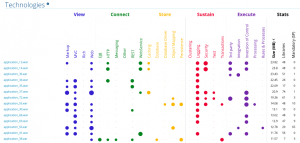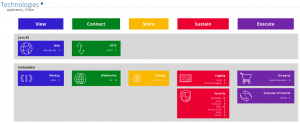[In case you aren’t following the Red Hat JBoss Middleware blog, we are reposting this article on developers.redhat.com.]
Red Hat Application Migration Toolkit (RHAMT) 4.1.0 has been released, and with it a new feature that I'd like to highlight in this article—Technology Reports.
If you’re not familiar with RHAMT, check out my previous article that introduces RHAMT and describes how you can use it to help with migration existing applications to a modern application platform by analyzing your code base.
Technology reports
This new feature in RHAMT provides an aggregate listing of the technologies used, grouped by function, for the analyzed applications. It shows how the technologies are distributed. After analysis has been performed, using this report hundreds of applications can be quickly compared. In addition, the size, number of libraries, and story point totals of each application are displayed, allowing you to quickly determine each application’s type from a single report, for example:
Examining application_13 in the above list, we can see that this is likely a secured front-end application with a cache for performance. It contains several libraries, most of which pertain to security in some form.
Each application can be further examined to identify the technologies in use. For instance, drilling down into application_13 shows this:
Here, we can see the precise libraries in use within each category. As previously noted, this application uses a large number of security libraries, and we can precisely identify the technologies in use.
Regardless of how you use the Technology Reports feature, I’m certain it will be useful in your migration and modernization efforts.
Last updated: November 15, 2018

